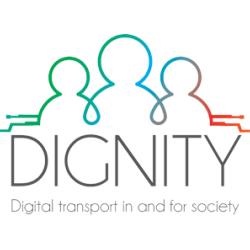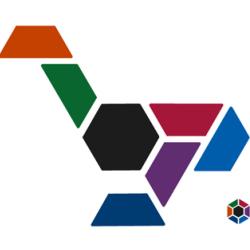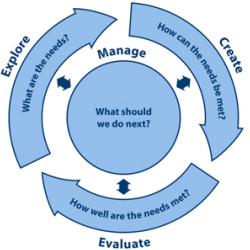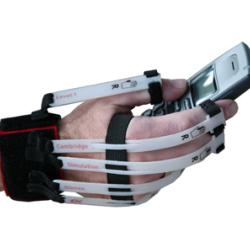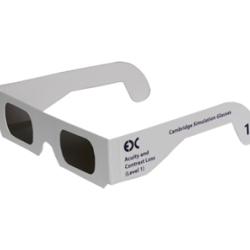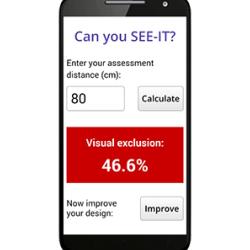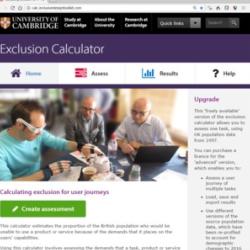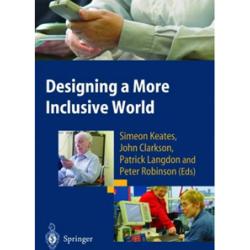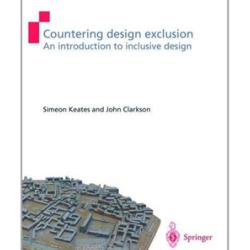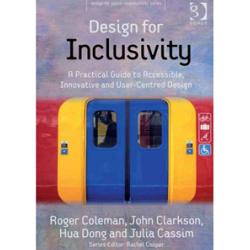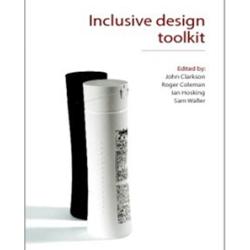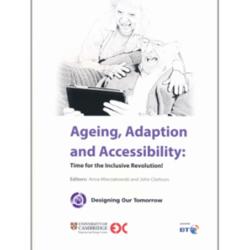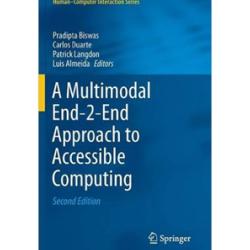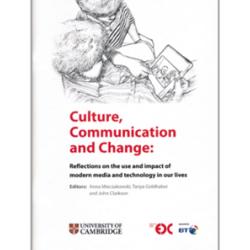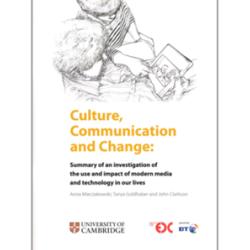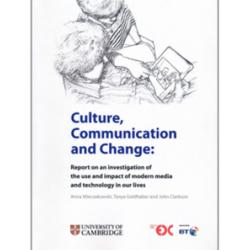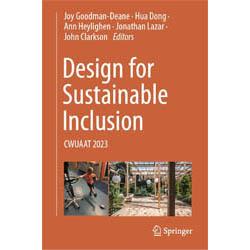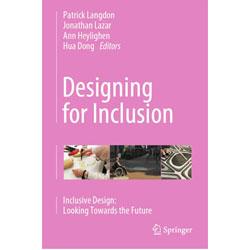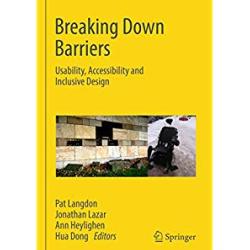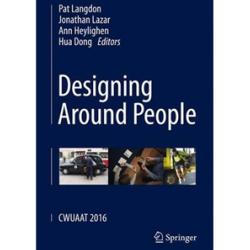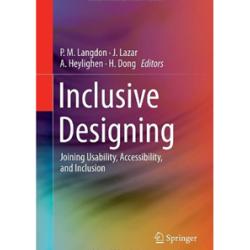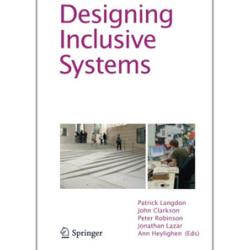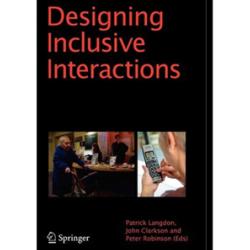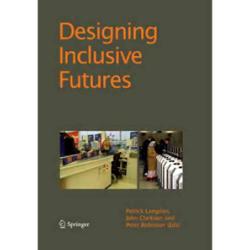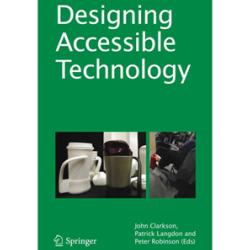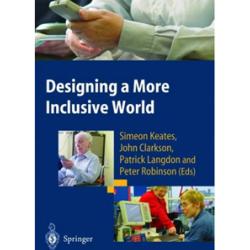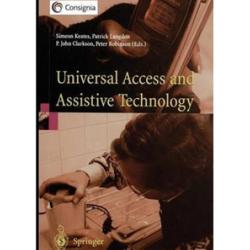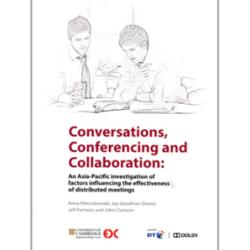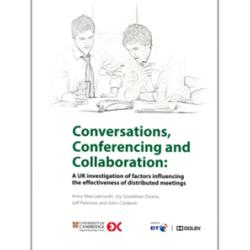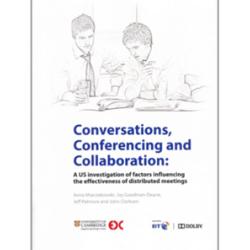
Countering design exclusion
The Inclusive Design Group researches the interplay between the demands products and services make of their users and the diverse range of capabilities of those users. In particular, we are researching how knowledge of inclusive design thinking can enable the design of more inclusive products, systems and services:
- by understanding the impact of user diversity in product and service interaction;
- by developing models of good design practice for design and retail professionals;
- by embedding good design practice in the design and retail community.
Our work is driven by practice. We are currently working with Jaguar Land Rover, BAE Systems, Morphy Richards, Transport for London, Proctor and Gamble, John Lewis, Stora Enso, Heathrow Airport and others to deliver on a variety of research topics relating to cognitive interaction and inclusive design.
We have developed an Inclusive Design Toolkit, along with audit tools and wearable simulators, to encourage designers to deliver more inclusive products and services. The toolkit is also being developed, under the name ‘Designing Our Tomorrow’, to supporting the teaching of design and technology in schools.
Group Members
- Professor P John Clarkson (Group Leader)
- Mike Bradley (Senior Research Associate and PhD student researching interaction design)
- Dr Joy Goodman-Deane (Senior Research Associate focusing on design tools)
- Dr Sam Waller (Senior Research Associate focusing on design tools)
- Dr Ian Hosking (Senior Research Associate researching design innovation)
- Dr Muhammad Hussain (Research Associate researching measurable better experiences)
- Diana Probst (Research Assistant in Inclusive Design)
- Anna Petyaeva (PhD Student researching inclusive software design)
- K-M White (Research Student)
- Dr Matteo Zallio (Visiting Research Fellow)
- Dr Lee Skrypchuk (Visiting Business Fellow)
- Dr Valentyna Shkuro (Visiting Research Fellow)
- Dr Jonathan Lazar (Visiting Academic Fellow)
- Cleo Valentine (Working with IMBUES project)
- Rob Morland (Industrial Fellow)
- Gillian Gibson-Piggott Industrial Fellow)
- Kim Hutton (Industrial Fellow)
- Prof Arnold Wilkins (Scientific)
Associated Projects
|
DIGNITY - DIGital traNsport in and for socieTY The goal of DIGNITY is to foster a sustainable, integrated and user-friendly digital travel eco-system that improves accessibility and social inclusion, along with the travel experience and daily life of all citizens. This requires an understanding of population diversity and a methodology for putting inclusive design into practice.. |
Tools
|
This toolkit follows from the Royal Academy of Engineering's Engineering Better Care report, providing a practical systems approach to health and care design and continuous improvement. It contains a framework of questions, activities and tools to assist in the planning and delivery of an improvement process. |
|
|
Every design decision has the potential to include or exclude customers. Inclusive design emphasizes the contribution that understanding user diversity makes to informing these decisions, and thus to including as many people as possible. User diversity covers variation in capabilities, needs, and aspirations. |
|
|
E-commerce Image Recommendations When grocery shopping on mobile devices, the pack size and type of product are often difficult or impossible to interpret from the photograph that represents the product. This tool provides recommendations for how to solve this problem, including downloadable templates and best practice examples of e-commerce images. |
|
|
The Cambridge simulation gloves provide insight into how limitations in hand movement can affect product use. They can build empathy with users, and can be used to examine the accessibility of products and services, helping to create better, more inclusive designs. Pairs of gloves can be purchased from our online store. |
|
|
The Cambridge simulation glasses provide insight into the effects of vision loss on product use. They can build empathy with users, and can be used to examine the visual accessibility of products and services, helping to create better, more inclusive designs. Pairs of glasses can be purchased from our online store. |
|
|
The Sight Exclusion Estimator - Interactive Tool (SEE-IT) can be used to assess the visual clarity of text or graphics. It estimates the number of people who would be unable to see handheld designs comfortably and can help to identify potential improvements to such visual designs that could lead to increased markets. |
|
|
Estimate the number of people unable to use a product or service because of the demands that it places on users' capabilities. The tool involves estimating demands on a range of capabilities, including vision, thinking and dexterity. This helps to quantify accessibility and prioritise improvements. |
Books
|
Inclusive design: Design for the whole population Edited by: John Clarkson, Roger Coleman, Simeon Keates, Cherie Lebbon. Springer. This book contains contributions from leading proponents of both Inclusive Design and Universal Design world-wide. It offers a comprehensive treatment of the issues relating to inclusive design and covers both the business case for inclusive design and a collection of tools and techniques for design practitioners. |
|
|
Countering Design Exclusion: An introduction to inclusive design Simeon Keates, John Clarkson. Springer. This book presents the concept of design exclusion and how addressing exclusion explicitly identifies the shortcomings in everyday products and services. It is aimed at design students and design practitioners and provides a wide-ranging overview of the issues associated with inclusive design. |
|
|
Roger Coleman, John Clarkson, Hua Dong, Julia Cassim. Gower. This book reviews the recent social trends and pressures that have pushed this subject to the fore, and assesses design responses to date in an international context. It includes case studies which describe transport, product development, IT and service projects, and highlights lessons that have been learned. |
|
|
John Clarkson, Roger Coleman, Ian Hosking, Sam Waller. Cambridge Engineering Design Centre. This early version of the Inclusive Design Toolkit provides tools and guidance for organisations and designers to produce better products that are accessible to the widest possible range of people. The guidance ranges from corporate level strategy to project level advice. The latest version of this work can be found in the tools section of this site. |
|
|
Ageing, Adaption and Accessibility: Time for the Inclusive Revolution! Edited by: Anna Mieczakowski, John Clarkson. Cambridge Engineering Design Centre. Modern Information and Communication Technology has, in the last few years, enriched the lives of many individuals and society as a whole. This book of reflections aims to stimulate a debate on how to digitally engage older people, especially given that the worlds population is ageing at an unprecedented rate. |
|
|
A Multimodal End-2-end Approach to Accessible Computing Pradipta Biswas, Carlos Duarte, Patrick Langdon, Luis Almeida, Christoph Jung. Springer. This book illustrates the state-of-the-art of technology and presents a vision for accessibility in the near future. It considers challenges faced by accessibility practitioners at research institutes, industries and legislative institutions throughout the world, and explores the different phases of delivering accessible products and services. |
|
|
Edited by: Anna Mieczakowski, Tanya Goldhaber, John Clarkson. Cambridge Engineering Design Centre. This book of reflections presents the views of experts from a wide range of disciplines - including neuroscience, psychology, human-computer interaction, computer science, behavioural economics and well-being - on the debate on the individual and societal effects of modern ICT in the United Kingdom, United States, Australia and China. |
|
|
Edited by: Anna Mieczakowski, Tanya Goldhaber, John Clarkson. Cambridge Engineering Design Centre. As communications technology develops, the ways in which humans interact with and react to technology and one another change. This summary report presents the findings from a survey of the impact of Information and Communication Technology (ICT) in the United Kingdom, United States, Australia and China. |
|
|
Edited by: Anna Mieczakowski, Tanya Goldhaber, John Clarkson. Cambridge Engineering Design Centre. As communications technology develops, the ways in which humans interact with and react to technology and one another change. This extensive report presents the findings from a survey of the impact of Information and Communication Technology (ICT) in the United Kingdom, United States, Australia and China. |
|
|
Design for Sustainable Inclusion Edited by: Joy Goodman-Deane, Hua Dong, Ann Heylighen, Jonathan Lazar and John Clarkson. Springer.
This book was inspired and informed by the United Nations Sustainable Development Goals including good health and well-being, reduced inequalities and sustainable cities and communities... |
|
|
Edited by: Patrick Langdon, Jonathan Lazar, Ann Heylighen, Hua Dong. Springer. This book presents papers from the 10th Cambridge Workshop on Universal Access and Assistive Technology. The CWUAAT has a long history of interdisciplinary, including design disciplines, computer scientists, engineers, architects, ergonomists, ethnographers, ethicists, policymakers, practitioners and user communities. Interdisciplinary is needed to meet the new challenges arising from techno-social changes. |
|
|
Edited by: Patrick Langdon, Jonathan Lazar, Ann Heylighen, Hua Dong. Springer. Inclusive design and assistive technology require input from many fields to be successful. This book looks into the barriers associated with the transdisciplinary research necessary to deliver a truly inclusive society, where they come from, and how they could be broken down. It presents papers from the ninth CWUAAT, held in Cambridge, England in 2018. |
|
|
Edited by: Patrick Langdon, Jonathan Lazar, Ann Heylighen, Hua Dong. Springer. This book explores various issues including the reconciliation of usability, accessibility and inclusive design, providing an invaluable resource to researchers, postgraduates, design practitioners, therapists and clinical practitioners, as well as design teachers. It presents papers from the eighth CWUAAT, held in Cambridge, England in 2016. |
|
|
Edited by: Patrick Langdon, Jonathan Lazar, Ann Heylighen, Hua Dong. Springer. This book represents a unique opportunity to bring together the Inclusive Design Research community where designers, computer scientists, engineers, architects, ergonomists, policymakers and user communities can exchange ideas. It presents papers from the seventh CWUAAT, held in Cambridge, England in 2014. |
|
|
Edited by: Patrick Langdon, John Clarkson, Peter Robinson, Jonathan Lazar, Ann Heylighen. Springer. This book refers to the emerging potential and relevance of the latest generations of inclusive design thinking, tools, techniques, and data, to mainstream project applications such as healthcare and the design of working environments. It presents papers from the sixth CWUAAT, held in Cambridge, England in 2012. |
|
|
Designing Inclusive Interactions Edited by: Patrick Langdon, John Clarkson, Peter Robinson. Springer. This book contains contributions from an international group of leading researchers in the fields of Universal Access and Assistive Technology, focusing on designing assistive and rehabilitation technology, measuring inclusion and inclusive interaction design. It presents papers from the fifth CWUAAT, held in Cambridge, England in 2010. |
|
|
Edited by: Patrick Langdon, John Clarkson, Peter Robinson. Springer. This book reflects on the need to explore the issues and practicalities that lie behind design that is intended to extend our active future lives. This encompasses design for inclusion in daily life at home but also extends to the workplace and for products within these contexts. It presents papers from the fourth CWUAAT, held in Cambridge, England in 2008. |
|
|
Designing Accessible Technology Edited by: John Clarkson, Patrick Langdon, Peter Robinson. Springer. This book discusses rapid and unprecedented population ageing, shifts in dependency ratios that point to escalating welfare and pensions costs which require radical and imaginative responses from Government and industry. It presents papers from the third CWUAAT, held in Cambridge, England in 2006. |
|
|
Designing a More Inclusive World Edited by: Simeon Keates, John Clarkson, Patrick Langdon, Peter Robinson. Springer. This book describes how designing inclusively is no longer an option for companies, it is a business essential. Global populations are getting older, legislation is increasingly prohibitive of exclusion and consumer attitudes are beginning to change. It presents papers from the second CWUAAT, held in Cambridge, England in 2004. |
|
|
Universal Access and Assistive Technology Edited by: Simeon Keates, John Clarkson, Patrick Langdon, Peter Robinson. Springer. There is an ever-increasing need for designers to create products that are genuinely inclusive of members of society with special needs. This book presents papers from the first Cambridge Workshop on Universal Access and Assistive Technology (CWUAAT), held in Cambridge, England in 2002. |
|
|
Anna Mieczakowski, Joy Goodman-Deane, Jeff Patmore, John Clarkson. Cambridge Engineering Design Centre. This report provides insight into the accessibility and effectiveness of modern communication technology in Asia-Pacific, which makes it possible to easily and cost-effectively run meetings across internationally dispersed teams all the time, anywhere. Such distributed meetings can reduce travel costs and participants' time. |
|
|
Anna Mieczakowski, Joy Goodman-Deane, Jeff Patmore, John Clarkson. Cambridge Engineering Design Centre. This report provides insight into the accessibility and effectiveness of modern communication technology in the UK, which makes it possible to easily and cost-effectively run meetings across internationally dispersed teams all the time, anywhere. Such distributed meetings can reduce travel costs and participants' time. |
|
|
Anna Mieczakowski, Joy Goodman-Deane, Jeff Patmore, John Clarkson. Cambridge Engineering Design Centre. This report provides insight into the accessibility and effectiveness of modern communication technology in the US, which makes it possible to easily and cost-effectively run meetings across internationally dispersed teams all the time, anywhere. Such distributed meetings can reduce travel costs and participants' time. |

